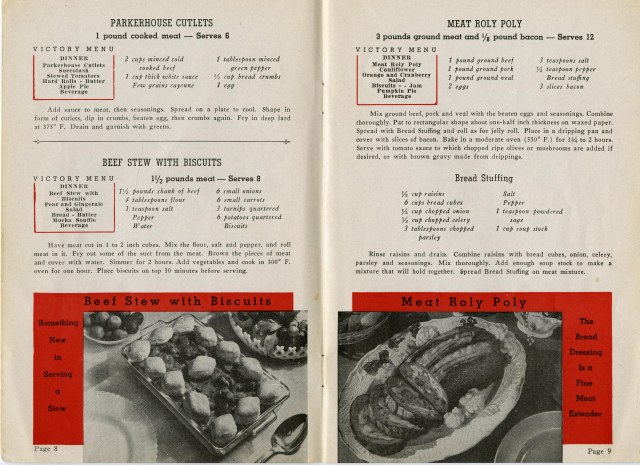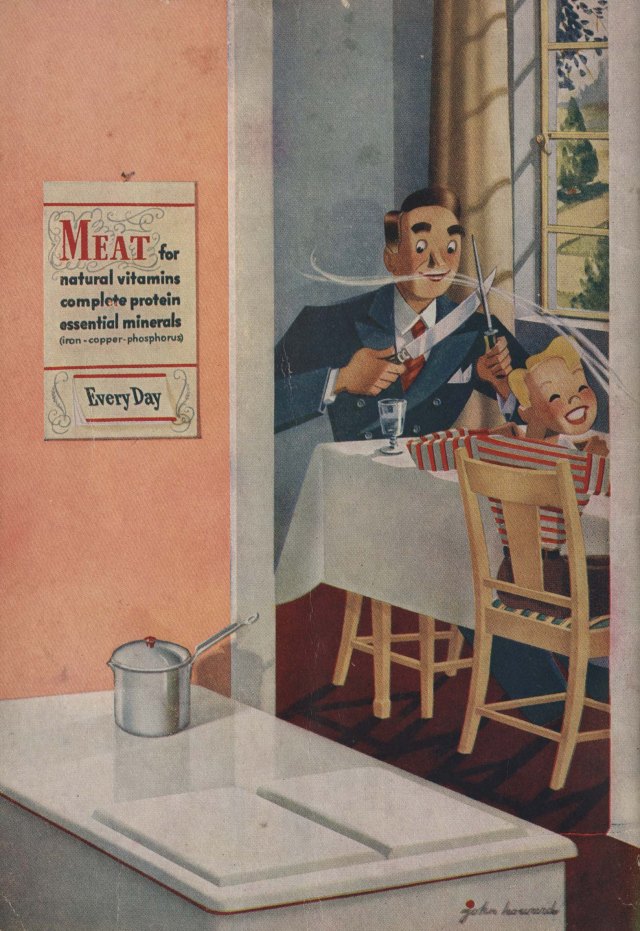This week marks the first full week of classes at Virginia Tech. We have a number of groups visiting Special Collections and among the materials we’ve been highlighting in some sessions for graduate students are a couple of pamphlets about “Victory” eating/cooking, World War I, and World War II. Inspired by this, I went in search of a “Victory” publication to share and found one I haven’t seen before:

Victory Meat Extenders was published during World War II. A publication by the National Livestock and Meat Board, distributed by Corkhill Fine Meat Products (Maryland), it’s part meat advertisement, part meat propaganda, part war propaganda. The majority of the booklet features recipes for various types of meats: beef, pork, veal, lamb, and variety (read: organ) meats. More on all that in a minute.
Before we get to the recipes, though, there are some other things to cover. The first two pages are focused on the purpose of extending proteins (more specifically, meats) in wartime. The next two pages consist of a handy guide for buying the quality meats you’ll still find in stores!


If you’re a follower and/or reader of “What’s Cookin’ @Special Collections?!” the recipes shouldn’t surprise you all that much. The idea of rationing and extending food supplies for victory is nothing new here and the way to go about it, despite the range of publications, is still usually similar. You’ll see lots of added veggies and grains, use of less appealing/cheaper cuts, and a fair share of organ meats.



The recipe names are worth a look, too. Some are straighforward (“Baked Meat Hash” or “Roast Veal Roll”), some are creative and inspiring (“Ladies Aid Salad” or “American Style Leg of Lamb Roast”), and some leave you wondering. “Meat Roly Poly,” “Monday Loaf,” and “Scotch Pancakes” may leave modern readers with more questions than say, a desire to cook said dishes. As for the organ meats, well, perhaps the less said the better. Fans of kidney, liver, tongue, and sweetbreads, I leave it to you to visit us and view for yourself.
The publication does leave us on a high note, including a series of suggestions for using/reusing bones, trimmings, and drippings for everything from gravy to frying to baking. You’ll also find a reminder to balance meals from all the food groups, and a pledge to retailers about supplying meat.

And then there’s the back cover. It features the obligatory, World War II-era reminder to “buy war bonds,” as well as an image of the Statue of Liberty. The best part, though? A poem, “The Pledge of the American Homemaker” by H. Howard Biggar which reads, in part:
I pledge the nation that my mission/Will be to practice good nutrition;/To plan those meals which every day/Yield energy for work and play/…With all the problems to be faced,/I’ll do my best to outlaw waste./I want to do my bit and more,/To help America win the war.”













































